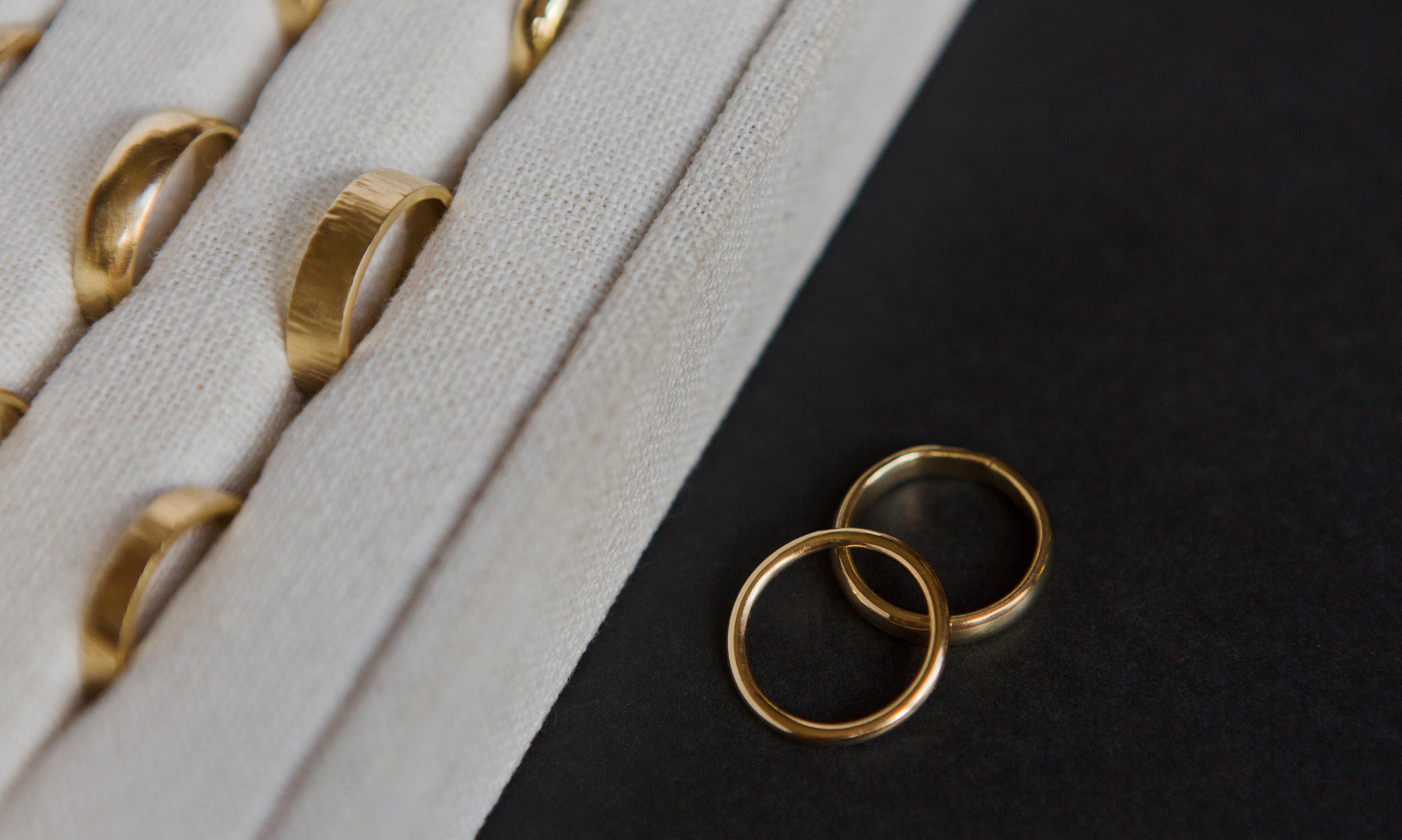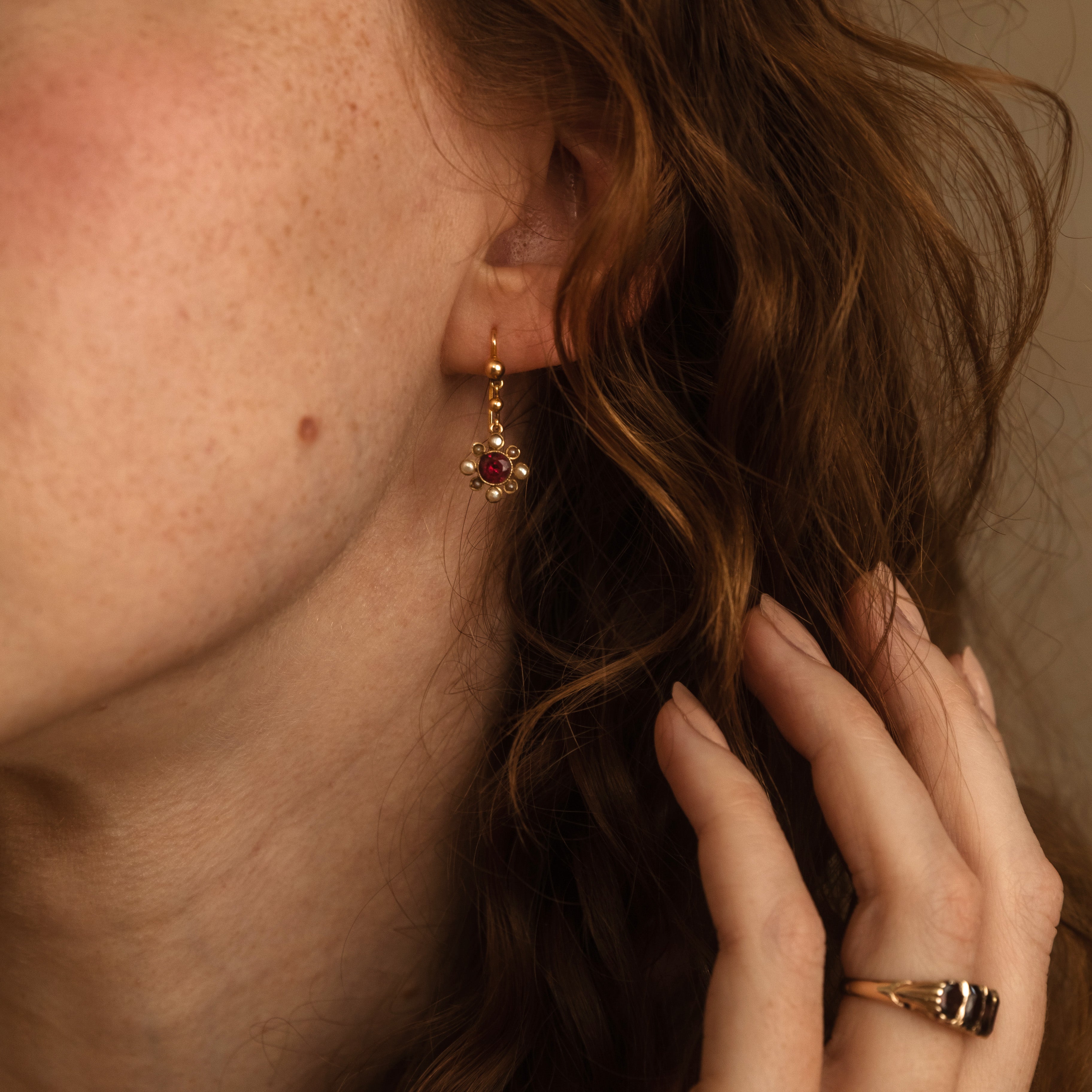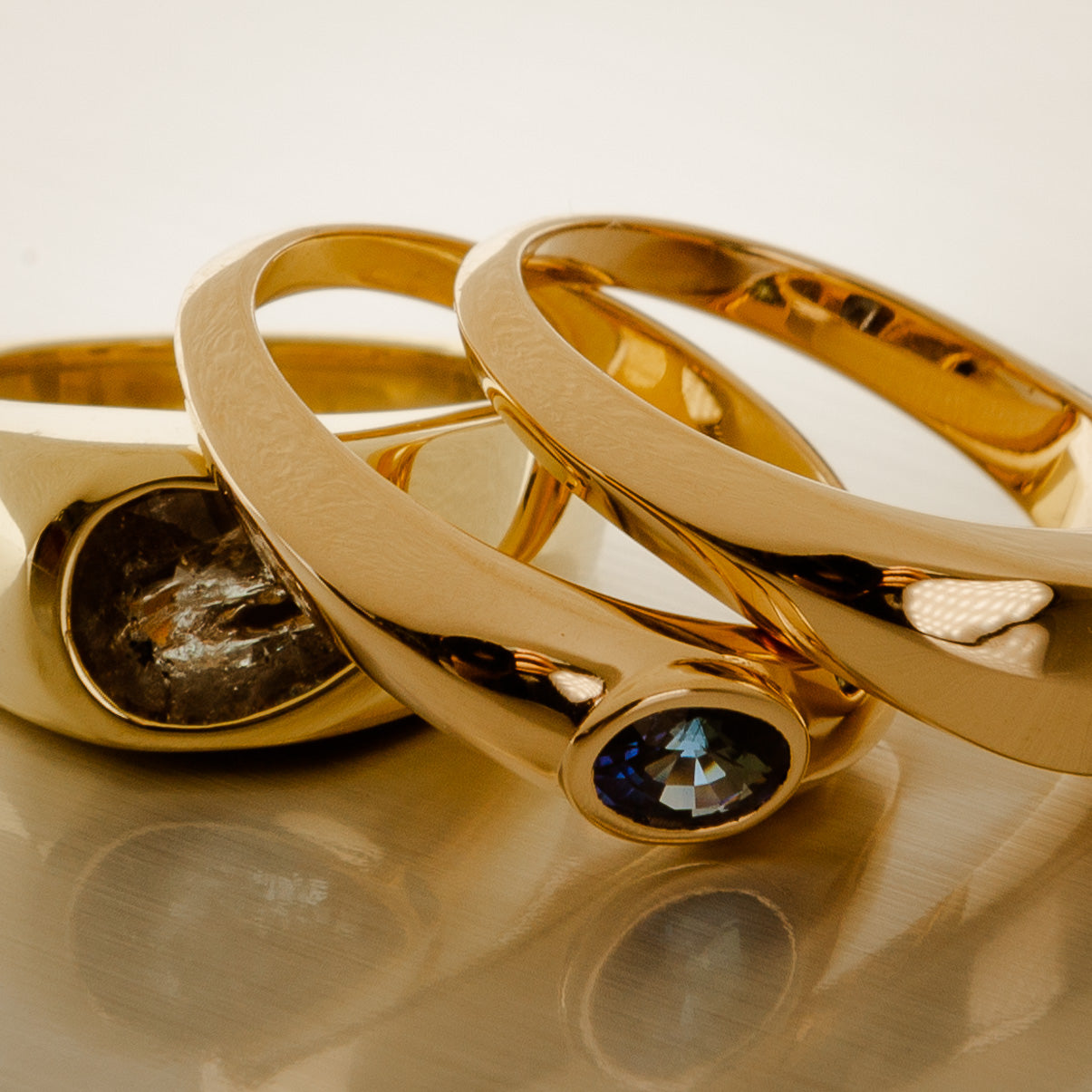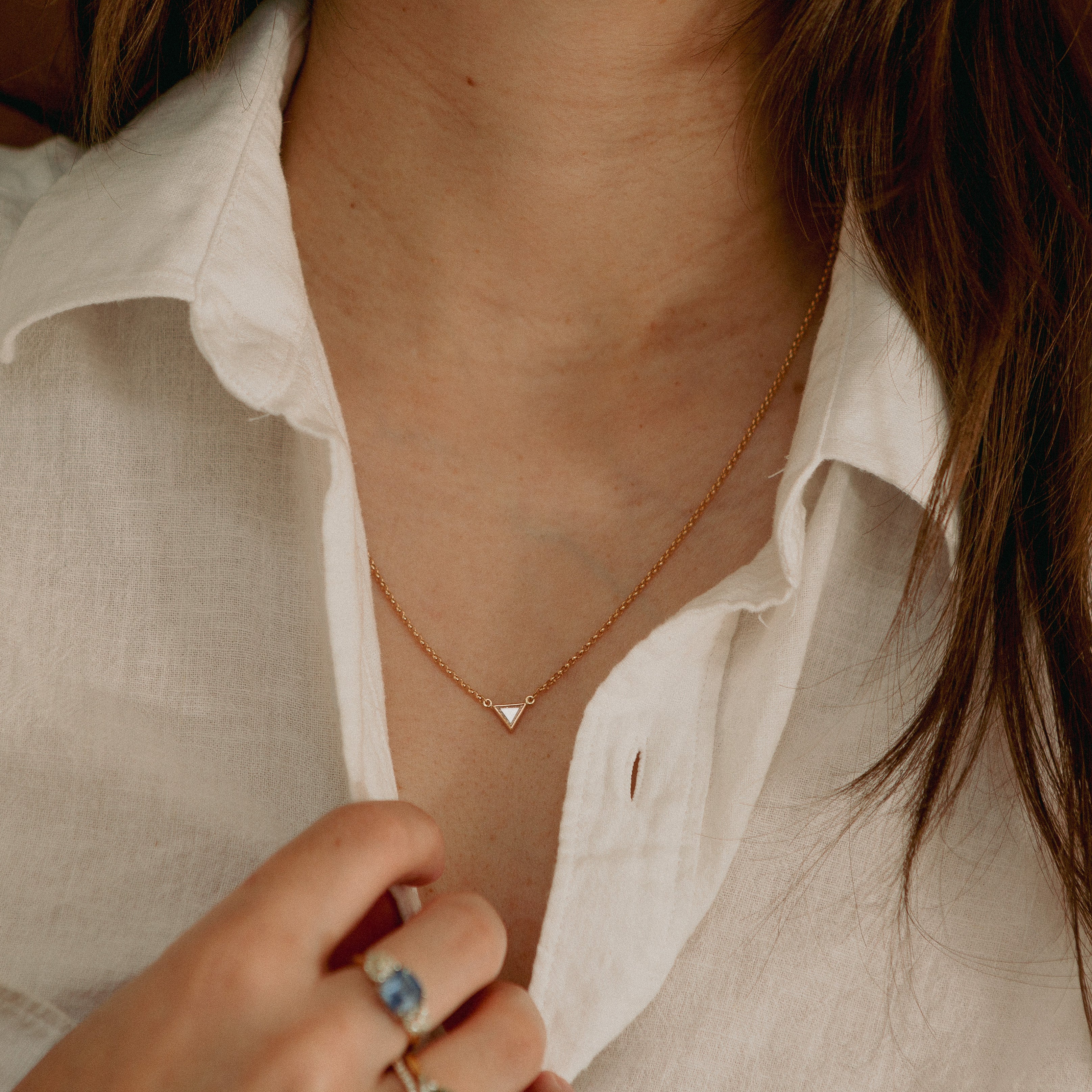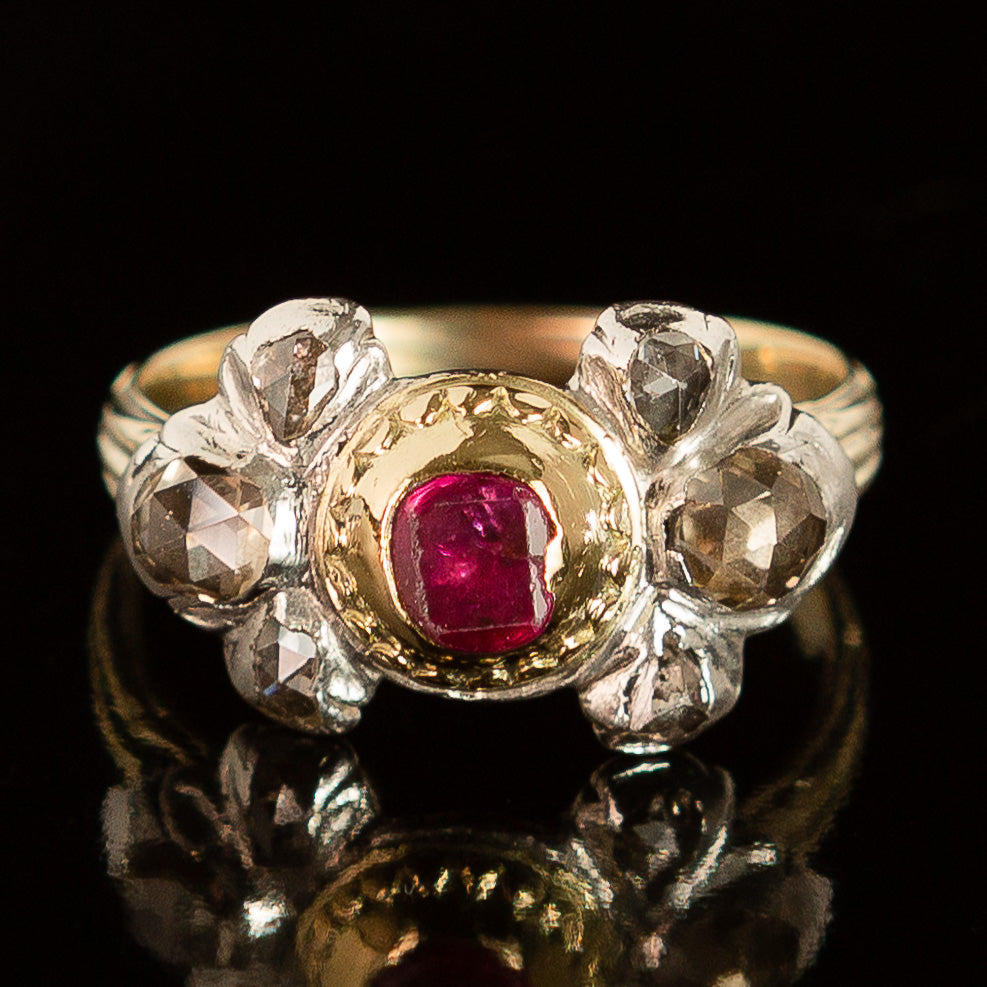These winter days sometimes feel so cold and grey. What better way to refocus your energy than to gaze at the soothing hues of lavender and plum found in one of the world’s most popular semiprecious gemstones, Amethyst!
Origins of Amethyst
Amethyst is the name for the purple variety of the mineral Quartz. It is found in large geodes within sedimentary and volcanic rock and its purple colors come from trace amounts of iron in the crystal’s chemical composition. Along with natural heat and irradiation in the crystal’s growth environment, this produces a range of purple tones.
Many people associate amethyst with a single, saturated purple color, but in fact it ranges in tone from nearly imperceptible pale lilac to deep merlot. Color zoning, in which bands or areas of distinctly different colors form in a single crystal, is also quite common in amethyst. Depending on how a raw crystal is cut, it can sometimes even reveal the crystal’s hexagonal crystal structure, as seen in “chevron amethyst” which is cut to display a cross-section of a single crystal displaying these bands of color.
Amethyst can be found in various parts of the world, with some notable locations including Brazil, Uruguay, Zambia, and Canada. In the United States, amethyst is found in found in Arizona, Colorado, Texas, Delaware, Pennsylvania, North Carolina, Maine. The Four Peaks mine in Arizona is the most important source of commercial, gem quality amethyst in the United States.
Symbolism and Meanings of Amethyst
Amethyst was historically believed to serve as a protective amulet, promising the wearer clarity of thought and a quick wit. Because of its color, amethyst is associated with the Greek god of wine, Bacchus, and was also believed to provide protection against drunkenness. It was even believed that drinking wine from a chalice carved of amethyst would prevent intoxication! While we can’t speak to the efficacy of those anti-intoxication properties, the beautiful range of purples found in amethyst can indeed stir our passions, sooth our nerves, or connect us to a sense of power and confidence.
Amethyst in Jewelry
The purple color connotes power and royalty, and the gem’s durability and ability to be shaped into different types of cut stones made it a versatile and celebrated gemstone throughout history. Amethyst is abundant in today’s gemstone market, but before the largest mine deposits of amethyst were discovered in South America in the 19th century, they were rare and highly prized alongside sapphires, rubies, and emeralds. For thousands of years it has been worn in royal and religious jewelry, and celebrated as for their beauty and metaphysical properties.
A cursed gem?
One of the most famous amethysts in history is the "Delhi Purple Sapphire," which turned out to not be a sapphire at all. It is a 135.8-carat amethyst that is now a part of the British Crown Jewels collection. The stone was described by Edward Heron-Allen, the last owner of the gem, as "trebly accursed and is stained with the blood, and the dishonor of everyone who has ever owned it." After being struck with immediate bad luck upon taking possession of the stone, Heron-Allen tried to give the jewel away to friends who were immediately struck with bad luck as well. Desperate to be rid of the gem, he threw it into the Regent’s Canal, only to have it returned to him months later when a jeweler purchased the stone from a dredger.
Heron-Allen eventually locked the gem away inside a box, leaving these final instructions on what to do with it: "Whoever shall then open it, shall first read out this warning, and then do as he pleases with the jewel. My advice to him or her is to cast it into the sea."
Caring for Amethyst
Amethyst is a durable gemstone that is suitable for all types of jewelry, including rings. Rarely, it may fade if exposted to direct sunlight for extended periods of time, so be sure to store it away from direct sun.
Clean amethyst with a gentle soap and a soft cloth to help maintain its luster.




